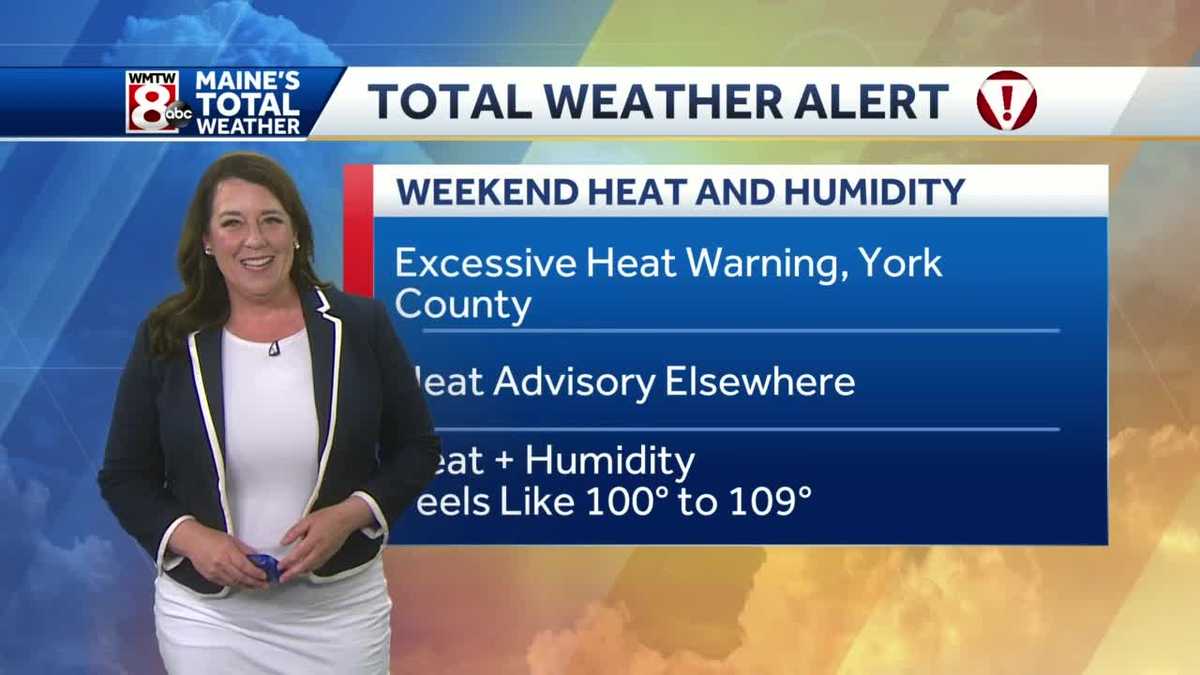Limited Use Of Excessive Heat Warnings: Reasons And Explanations

Table of Contents
Lack of Awareness and Understanding of Excessive Heat Warnings
Many people are simply unaware of excessive heat warning systems or fail to understand the severity of the risks involved. Effective heatwave preparedness hinges on clear and consistent messaging that reaches everyone, regardless of background or location. The current system often falls short.
- Insufficient public education campaigns: Many communities lack robust public awareness campaigns that effectively communicate the dangers of extreme heat and explain how to interpret and respond to heat alerts.
- Lack of multilingual resources: Warnings often aren't translated into the languages spoken by significant portions of the population, creating critical communication barriers for vulnerable communities.
- Inadequate dissemination through various media channels: Relying solely on one or two media channels (e.g., television or radio) leaves many individuals, especially those who are digitally excluded, uninformed. Multi-platform dissemination is crucial for effective heatwave awareness.
- The need for simplified warning levels and clear action plans: Complex warning systems with confusing terminology can lead to misunderstandings and inaction. Simple, easily understandable warning levels accompanied by clear and concise action plans are essential for effective risk communication.
Challenges in Predicting and Issuing Timely Excessive Heat Warnings
Accurately predicting extreme heat events is complex. While meteorological advancements have improved forecasting capabilities, limitations remain, especially when it comes to predicting localized extreme heat and the duration and intensity of heatwaves.
- Limitations in predicting localized extreme heat: General weather forecasts often fail to capture the hyperlocal variations in temperature that can create dangerously hot microclimates within a city or region.
- Difficulties in predicting the duration and intensity of heatwaves: Predicting the precise length and intensity of a heatwave remains challenging, impacting the timing and duration of warnings.
- The need for improved forecasting models and data analysis techniques: Investing in advanced meteorological models and incorporating real-time data from various sources (e.g., weather stations, satellite imagery, urban heat island sensors) is essential for enhanced prediction accuracy.
- The role of climate change in increasing prediction difficulty: Climate change is exacerbating the frequency and intensity of heatwaves, making accurate prediction even more difficult and necessitating adaptation of forecasting models.
Insufficient Resources and Infrastructure for Effective Heat Warning Dissemination
Effective dissemination of excessive heat warnings requires adequate resources and infrastructure. However, many regions face significant challenges due to limited funding and personnel.
- Limited funding for public health campaigns: Insufficient funding often hinders effective public health campaigns and the development of targeted interventions for vulnerable populations.
- Shortage of trained personnel to issue and manage warnings: Dedicated staff are needed to monitor weather data, issue timely and accurate warnings, and manage the communication aspects of a heatwave response.
- Ineffective communication channels in reaching marginalized communities: Traditional communication channels often fail to reach marginalized and vulnerable populations, including those experiencing homelessness, living in remote areas, or facing language barriers.
- Technological barriers in accessing warnings in remote areas: Lack of access to reliable internet or cell service, especially in remote or underserved communities, presents significant barriers to accessing timely warnings.
Socioeconomic Factors Affecting Response to Excessive Heat Warnings
Socioeconomic factors significantly influence the effectiveness of excessive heat warnings. Poverty, lack of access to air conditioning, and inadequate housing conditions create increased vulnerability to heat-related illnesses and deaths.
- The disproportionate impact of heat on low-income communities: Low-income communities are often disproportionately affected by extreme heat due to limited access to cooling measures and increased exposure to heat-generating urban environments.
- Limited access to cooling centers and air conditioning: The availability of cooling centers and affordable air conditioning significantly impacts the ability of individuals to escape the dangerous effects of extreme heat.
- The role of housing conditions in heat vulnerability: Poorly insulated or poorly ventilated housing exacerbates the dangers of heat, especially for elderly and vulnerable individuals.
- The need for targeted interventions for vulnerable populations: Developing and implementing targeted interventions for vulnerable populations is crucial to ensuring the effectiveness of heat warnings and mitigating the disproportionate impact of heat on these communities.
Improving the Utilization of Excessive Heat Warnings: A Call to Action
The underutilization of excessive heat warnings stems from a combination of factors, including limited awareness, forecasting challenges, resource constraints, and socioeconomic disparities. Strengthening excessive heat warning systems is critical for protecting public health and saving lives. This requires a multi-pronged approach: increased funding for public health campaigns and infrastructure improvements, investment in advanced forecasting technologies, development of targeted communication strategies to reach vulnerable populations, and addressing underlying socioeconomic disparities that contribute to heat vulnerability.
Take action today to protect yourself and your community from excessive heat. Learn more about excessive heat warnings in your area and advocate for improved systems to strengthen heatwave preparedness and ensure everyone has access to life-saving information. Improving the effectiveness of heat warnings is a collective responsibility, and by working together, we can create safer and more resilient communities for all.

Featured Posts
-
 Killer Seaweed Extermination Of Marine Life In Australia
May 30, 2025
Killer Seaweed Extermination Of Marine Life In Australia
May 30, 2025 -
 Gisele Pelicots Memoir Optioned By Hbo A Look At The Adaptation
May 30, 2025
Gisele Pelicots Memoir Optioned By Hbo A Look At The Adaptation
May 30, 2025 -
 Understanding Btss Future Top 10 Questions And Answers
May 30, 2025
Understanding Btss Future Top 10 Questions And Answers
May 30, 2025 -
 Hondas Winning Bikes Attracting Top Riders
May 30, 2025
Hondas Winning Bikes Attracting Top Riders
May 30, 2025 -
 New Business Hot Spots A Comprehensive Map Of Growth Areas
May 30, 2025
New Business Hot Spots A Comprehensive Map Of Growth Areas
May 30, 2025
